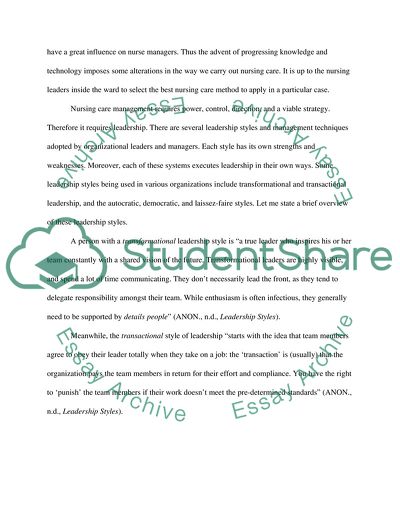Cite this document
(The Role of Nurses in the Delivery and Monitoring of Quality of Care Literature review, n.d.)
The Role of Nurses in the Delivery and Monitoring of Quality of Care Literature review. https://studentshare.org/nursing/1707551-with-the-knowledge-of-management-and-leadership-theories-discuss-the-role-of-the-nurse-in-the-delivery-and-monitoring-of-quality-of-care-to-patients
The Role of Nurses in the Delivery and Monitoring of Quality of Care Literature review. https://studentshare.org/nursing/1707551-with-the-knowledge-of-management-and-leadership-theories-discuss-the-role-of-the-nurse-in-the-delivery-and-monitoring-of-quality-of-care-to-patients
(The Role of Nurses in the Delivery and Monitoring of Quality of Care Literature Review)
The Role of Nurses in the Delivery and Monitoring of Quality of Care Literature Review. https://studentshare.org/nursing/1707551-with-the-knowledge-of-management-and-leadership-theories-discuss-the-role-of-the-nurse-in-the-delivery-and-monitoring-of-quality-of-care-to-patients.
The Role of Nurses in the Delivery and Monitoring of Quality of Care Literature Review. https://studentshare.org/nursing/1707551-with-the-knowledge-of-management-and-leadership-theories-discuss-the-role-of-the-nurse-in-the-delivery-and-monitoring-of-quality-of-care-to-patients.
“The Role of Nurses in the Delivery and Monitoring of Quality of Care Literature Review”. https://studentshare.org/nursing/1707551-with-the-knowledge-of-management-and-leadership-theories-discuss-the-role-of-the-nurse-in-the-delivery-and-monitoring-of-quality-of-care-to-patients.


